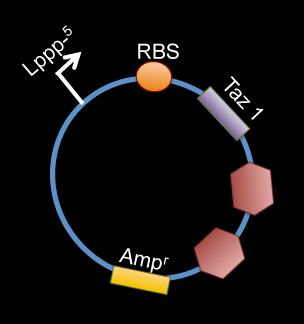Team:Brown
From 2009.igem.org
Every year, over fifty million people in the US suffer from allergic rhinitis, the most common type of allergy. Allergens, such as pollen, dust, and dander result in nasal congestion, itching, burning, sneezing, and overall discomfort. Current treatments include over-the-counter antihistamines, however, side effects of these drugs include drowsiness, restlessness, and poor concentration. For patients suffering from chronic allergies and inflammation, there is a great need for an alternative strategy for combating allergic symptoms without causing significant side effects.
The 2009 Brown University iGEM team worked to treat allergic rhinitis by engineering Staphylococcus epidermidis, a microbe endogenous to the human nasal flora, to secrete a recombinant histamine-binding protein in response to the elevated histamine concentrations of an allergic response. The engineered strain of S. epidermidis will function as a self-regulating drug factory in the nose, providing relief, without any negative side effects. <LINK TO A PROJECT ABSTRACT>
System Components
Parts
Our team submits a library of well characterized and standardized promoters and sensors for eukaryotic cells. We will also contribute the first eucaryotic standart chassis for iGem featuring standardized genome integration sites.
 "
"


